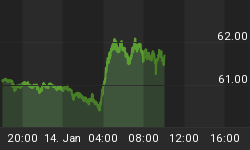Equities have continued to rise even though the financial problems of the PIIGS (Portugal, Ireland, Italy, Greece and Spain) remain unresolved. Bullish sentiment readings have reached extremes and investors have positioned themselves for a singular, bullish outcome. While some market observers view high investor bullishness as an indicator that stocks will continue to advance, we believe lopsided sentiment is the Achilles' heel for markets. In fact, all of the major declines in the past few years were preceded by extremes in bullish investor readings. Figure 1 shows that bulls now outnumber bears by the second largest percentage in the past 4 years. The last time the net percentage of bulls was as high as it is now was coincidentally just before the market topped in May 2011.
Figure 1. American Association of Individual Investors - % Bull Minus % Bears
Sources: American Association of Individual Investors, Continental Capital Advisors
Investors have becoming increasingly bullish as bearish ones have become almost non-existent. Figure 2 shows that there are fewer bears today than at any other time since the beginning of 2007, including at the all-time high of the S&P 500 in October 2007.
Figure 2. American Association of Individual Investors - % of Bearish Investors
Sources: American Association of Individual Investors, Continental Capital Advisors
Investors are also acting on their bullish sentiment. Figure 3 shows that the number of shares short on the NYSE as of 12/31/11 has collapsed since the stock market bottomed in October 2011. Notice that short interest was last this low just prior to the May 2011 peak.
Figure 3. NYSE Short Interest vs SPY Since October 2008
![]() Larger Image - Source: Zero Hedge
Larger Image - Source: Zero Hedge
Despite high levels of optimism and lopsided investor positioning, investor participation has been declining. Figure 4 below shows that overall trading volume has declined for the past 4 years. Market technicians generally view rising prices favorably when accompanied by rising volumes. Thus, rising stock prices on declining volumes calls into question the durability of the recent market rally as well as the entire rally since the March 2009 bottom.
Figure 4. 50-Day Moving Average Of US Exchange-Listed Stocks
The four-month rally that started at the October 2011 interim low has led to a surge in investor bullishness and positioning, which when combined with insurmountable sovereign debt problems, sets the backdrop for a major decline in equities.















